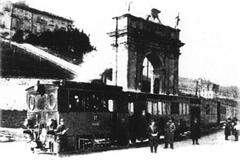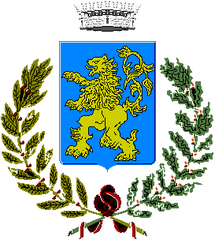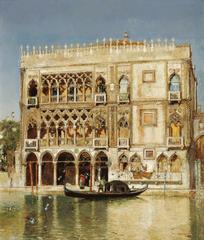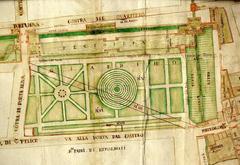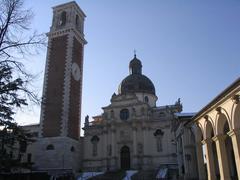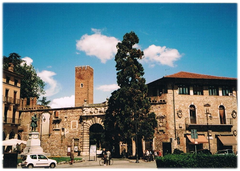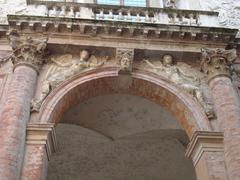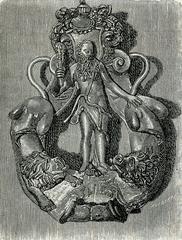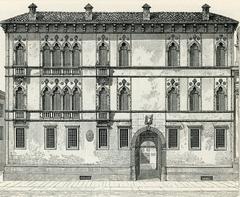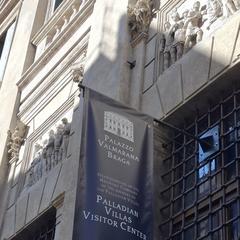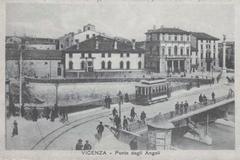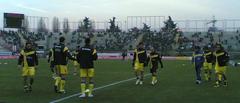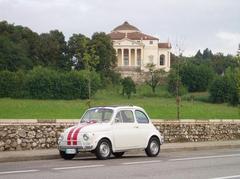
Palazzo Thiene Bonin Longare: Visiting Hours, Tickets, and Vicenza Historical Sites Guide
Date: 04/07/2025
Introduction to Palazzo Thiene Bonin Longare
Palazzo Thiene Bonin Longare stands as a hallmark of Renaissance architecture in Vicenza, Italy—a city globally recognized as the “City of Palladio.” Commissioned by the influential Thiene family in the late 16th century, the palace is a masterpiece that bridges the genius of Andrea Palladio and his successor Vincenzo Scamozzi. With its harmonious proportion, sophisticated spatial arrangement, and artistic embellishments, the palace encapsulates the spirit of the Renaissance and reflects the enduring ambitions of Vicenza’s patrician elite (Vicenza UNESCO; Liquisearch; Dong.World).
As part of the UNESCO World Heritage Site “City of Vicenza and the Palladian Villas of the Veneto,” Palazzo Thiene Bonin Longare offers visitors a unique window into the artistic, social, and architectural fabric of Renaissance Vicenza. This guide provides a detailed overview of its history, architectural significance, visitor information, and practical tips to help you plan an enriching visit (Palladian Routes; Audiala).
Table of Contents
- Historical Overview
- Architectural and Artistic Features
- Visitor Information
- Practical Tips for Your Visit
- Frequently Asked Questions (FAQ)
- Visuals and Media
- Conclusion and Call to Action
- References
Historical Overview
Origins and Patronage
Commissioned in the late 16th century by Francesco Thiene, Palazzo Thiene Bonin Longare was envisioned as a grand residence reflecting the family’s prominence within Vicenza’s elite. The Thiene family’s patronage was instrumental in shaping the city’s architectural landscape during the Renaissance (Wikipedia).
Palladio’s Design and Scamozzi’s Completion
Andrea Palladio, the celebrated Renaissance architect, drafted the original plans for the palace around 1572. His mastery of classical proportion and spatial logic is evident in surviving autograph drawings. However, Palladio died in 1580 before construction began. The project was revived and completed by Vincenzo Scamozzi, Palladio’s pupil, in the early 17th century. Scamozzi blended Palladian ideals with his own architectural vision, adapting the structure to existing urban constraints and adding distinctive elements (Vicenza Ville Palladio; Liquisearch).
Ownership and Artistic Heritage
Remaining in the Thiene family until the 19th century, the palace was then acquired by Lelio Bonin Longare in 1835, who enriched its decoration and left a lasting imprint. The interiors feature frescoes, stuccoes, and artworks by renowned artists including Alessandro Vittoria and Bartolomeo Ridolfi, attesting to the evolving tastes and artistic ambitions of its noble owners (Vicenza UNESCO).
UNESCO World Heritage Status
Since 1994, the palace has been recognized as part of the UNESCO World Heritage Site “City of Vicenza and the Palladian Villas of the Veneto,” affirming its historical and architectural significance (Vicenza UNESCO).
Architectural and Artistic Features
Palazzo Thiene Bonin Longare exemplifies late Renaissance architecture, characterized by its symmetrical façade with restrained ornamentation, half-columns, and pilasters that create a dynamic interplay of light and shadow. The building’s urban villa typology is expressed in its integration with Vicenza’s cityscape, and its floor plan demonstrates a careful balance between new construction and adaptation of existing structures (Dong.World).
A double-storey loggia, central courtyard, and grand halls highlight Palladian and Scamozzian influences. Interior spaces feature exquisite frescoes, stuccoes, and period furnishings, while later modifications by the Bonin Longare family added further decorative richness (Audiala).
Visitor Information
Location and Access
Palazzo Thiene Bonin Longare is centrally located on Corso Palladio, northeast of Piazza del Castello in Vicenza’s historic center. It is within walking distance of the city’s main train station and close to major attractions such as the Basilica Palladiana and Teatro Olimpico.
Visiting Hours and Tickets
- Standard Hours: Tuesday to Sunday, 10:00 AM–6:00 PM (closed Mondays and public holidays). Hours may vary for special events or restoration—always confirm via the Palladian Routes website.
- Tickets: Standard admission is approximately €8; discounted rates for EU youth (18–25), students, and groups; free for children under 18 and Vicenza residents. Tickets may be purchased online or at the entrance.
Guided Tours and Events
Guided tours—offered in Italian and English (other languages by request)—reveal insights into the palace’s architecture and history. Tours typically last 60–90 minutes and can be booked individually or as part of broader Palladian itineraries. The palace also hosts cultural events, exhibitions, and concerts throughout the year (Palladian Routes).
Accessibility
The ground floor is partially wheelchair accessible. Due to the historic layout, some upper areas may present mobility challenges; visitors with specific needs are encouraged to contact the palace in advance for assistance.
Nearby Attractions
Vicenza’s compact center allows easy exploration of nearby sites such as:
- Basilica Palladiana
- Teatro Olimpico
- Palazzo Chiericati
- Other Palladian villas
Practical Tips for Your Visit
- Advance Booking: Recommended, especially during peak seasons.
- Dress Code: Modest attire for formal or religious areas.
- Photography: Permitted without flash in most areas. Restrictions may apply during certain exhibitions.
- Visit Duration: Allocate 1–1.5 hours; combine with other nearby attractions for a half- or full-day itinerary.
- Getting There: City buses and public parking are available; note limited traffic zones in the historic center.
Frequently Asked Questions (FAQ)
Q: What are the visiting hours?
A: Typically 10:00 AM–6:00 PM, Tuesday–Sunday. Hours vary—check the official website.
Q: How can I buy tickets?
A: Online via authorized platforms or at the entrance; advance booking is recommended.
Q: Is the palace wheelchair accessible?
A: The ground floor is accessible; upper floors may be challenging. Contact ahead for details.
Q: Are guided tours available?
A: Yes, in Italian and English; group and themed tours can be arranged.
Q: Can I take photographs inside?
A: Yes, non-flash photography is usually allowed, with some restrictions during exhibitions.
Visuals and Media
Explore high-resolution images, virtual tours, and interactive maps on the official websites. Recommended alt tags include “Palazzo Thiene Bonin Longare façade Vicenza,” “double-storey loggia Palazzo Thiene,” and “Renaissance interior decoration Vicenza palace.”
Conclusion and Call to Action
Palazzo Thiene Bonin Longare is an essential destination for anyone exploring Vicenza’s Renaissance heritage. Its architectural grandeur, historical depth, and central location make it a highlight for visitors seeking to immerse themselves in Italian cultural history. For the richest experience, plan ahead, book a guided tour, and explore related Palladian landmarks.
For updates on visiting hours, events, and ticketing, visit the Palladian Routes website and follow official channels. Download the Audiala app for audio guides, and share your visit using #PalazzoThieneVicenza on social media.

